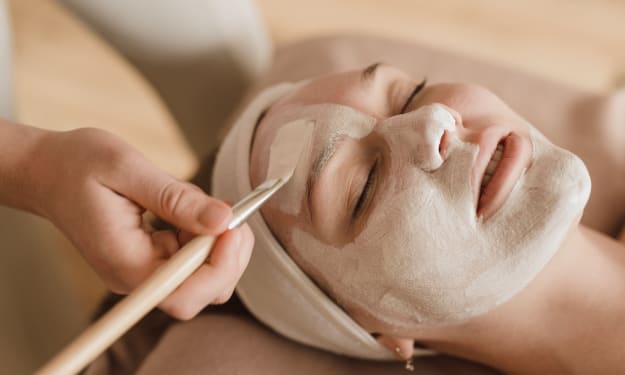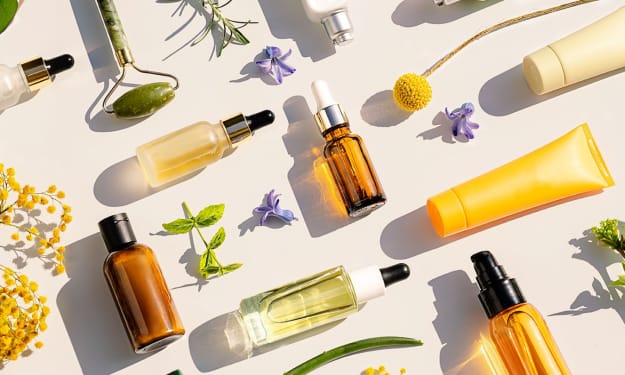The Miracle Cream That Can Reverse Aging Could Ruin Your Skin
Retinol can give you the skin of your dreams — if used correctly

t was my hundredth skincare purchase of the week.
Having moved continents, I was suddenly dealing with a bout of acne like never before. Angry red spots dotted my cheeks, where the skin used to be flawless.
Like any other sane person, I dove headfirst into the world of the internet to find some answers.
Many blogs, skinfluencers, YouTube videos, and TikTok’s later, I found my holy grail product.
A Retinol cream.
Influencers raved about how it treated their acne and revealed youthful, smooth skin. Board-certified dermatologists like Dr. Dray recommended it on their YouTube channels. To my desperate self, it seemed like the answer to all my problems.
One cream to solve it all.
Before long, I was riding the Retinol wave, having ordered a drugstore product containing retinol from a globally trusted brand.
Two weeks later, my skin was itchy, irritated, blotched, forming ugly-looking pustules, and just extremely pissed.
Where was my skin transformation? It seemed to go from bad to worse.
Extensive research on the internet told me what I needed to know. I had used a potent product on my skin, knowing nothing about it.
What Is Retinol?
Retinol is simply a form of vitamin A.
It is one of those magic ingredients used in skincare products that are proven to reverse the signs of aging. Not only does consistent use help improve fine lines and wrinkles, but it is also the most popular treatment for acne, sun damage, and dark spots.
A multipurpose cream to renew the skin? Take my money.
Retinol, when applied to the skin, gets converted to retinoic acid at a cellular level. Over-the-counter products contain less potent forms of retinol that take longer to get converted into retinoic acid.
This increases the rate of skin renewal and collagen production.
Multiple studies have confirmed this. Topical retinol can improve the signs of natural aging.
No wonder it is hailed as an anti-aging hero by the skincare industry.
But, it comes with its downsides. Retinol is a potent ingredient. And even though it’s easy to give in to the hype and miraculous claims, using any product without understanding it is a disaster waiting to happen.
A lesson I learned the hard way.
Here are five mistakes I made at the beginning of my retinol journey :
Using Too Much Product
As I said before, retinol is a potent ingredient. And any component of such efficacy comes with its own set of side effects.
I wanted results, and I wanted them quick. I may have given into the more is more strategy.
In my excitement, I used a giant dollop of product on my face every night. My skin freaked out.
The magic cream came with its own set of side effects, even if they are temporary, usually lasting two to six weeks. Some amount of dryness, redness, skin peeling or flaking, and also more breakouts.
The skincare world fondly refers to this as the “retinol uglies”.
It gets worse before it gets better.
If you are using it correctly, these should be manageable. Nobody would notice your face peeling off unless they were standing next to you. But, if you woke up to a sunburnt face a few days after slathering retinol cream, chances are you took applied a higher potency than your skin can tolerate or applied way too much of it too often.
So how much retinol do we require? A pea-sized amount for your entire face. That’s it.
I was putting it on like a moisturizer every night. My skin went crazy, and a few days later, I was dealing with retinol burns. Ouch!
Mixing It with Different Active Ingredients
Wanting to get the benefits of many products and hoping it would clear away my breakouts faster, I used retinol with other active ingredients.
This was a huge mistake.
Not only did I not benefit from mixing stuff, but it also made my skin itchy and irritated every time I did my nighttime skincare routine.
Retinol, being the potent and slightly irritating product it is, does not go along with other strong products. Some acne treatments like benzoyl peroxide can deactivate retinol. Most acne products are drying. Some others just don't get along.
Putting these characters together calls for a very nasty party on your skin.
It’s best to only use retinol as the sole active ingredient at night time so that you are not annoying your skin further. More is not merrier here.
Not Doing the Right Research Beforehand
This was the biggest mistake I committed in the beginning. I did not bother to find out more information about how the product worked, side effects, and how to use it before slapping it onto my face.
Like a naïve child, I believed the hype and got on the retinol bandwagon without another thought.
I could have completely avoided making my skin worse if only I had taken the time to read the copious amount of information available at hand.
If I had, I would have known to use a pea-sized amount, helping me avoid the sunburnt look later. I would have known how to reduce the side effects so that I wasn’t walking around like a snake shedding its skin.
As with any product, it is important to not blindly follow influencers and really learn how it works and figure out if it suits you.
It’s never a one size fits all situation with skincare.
Not Applying Moisturizer After
Moisturizer is crucial. I cannot emphasize this enough.
A potent ingredient that causes dryness and flaking? A simple moisturizer without many irritant factors, like fragrance, can do wonders.
During the action of retinol, your older skin cells are basically being removed to bring out the young skin underneath. Hence, the peeling.
This baby skin needs all the protection it can get.
One of the best methods to minimize dryness and peeling associated with retinol is using the sandwich technique during application. This means applying a layer of moisturizer on clean, damp skin, then applying your retinol, followed by a second layer of moisturizer. This is especially useful for people with sensitive skin. Use a moisturizer with quality ingredients to act as a buffer between the retinol and your skin.
Just make a retinol sandwich.
Not Using Sunscreen During Daytime
Another costly skincare mistake.
Honestly, you should use sunscreen daily, whether or not you are on a retinol journey. Daily sunscreen application has so many benefits, including preventing photoaging and reducing dark spots.
It plays an even more vital role when using retinol at night.
Retinoids work by increasing cell turnover. This means it increases the production of new skin cells and removes the older ones on top. As the new, vulnerable baby skin is revealed, it has to be protected from the sun.
Sun damage is a real thing, and it's important to protect skin from it.
Retinol does make the skin more sensitive to sunlight.
If you want to start using retinoids, a moisturizer and sunscreen should be your best friends.
Not Giving It Enough Time
In this world of fast results and same-day deliveries, it is normal to expect everything to work at high speed. And get frustrated if it doesn't.
But with many things, especially those involving your body and health, improvements take time. Skincare is a long game and not a quick fix.
As with any other product, retinol takes a month to six months to show results. Not being consistent with use can end up doing more harm than good. If you keep discontinuing because the irritation drove you crazy and restarting again, your skin will never build a tolerance to the product.
Yes, it’s not particularly motivating to continue using a product when it seems to increase your breakouts, but remember, your skin needs time.
It needs time to get used to a new product, so it’s best to start off using retinol once or twice a week for a month and take it up from there.
The best results come if you don’t give up and stick with it.
Retinol is a superhero skincare ingredient. It has so many benefits packed into one tiny tube. The initial ugly stage and discomfort are well worth the wait.
The best way to introduce it into your skin regimen is to start slowly and at a lower concentration. Take a few precautions, like doing a patch test beforehand. Learn about what is going on your skin. There’s no shortage of information on the internet.
And if in doubt, consult a dermatologist.
If you stick with it, you will have glowing skin in no time.
About the Creator
Eshal Rose
Writer of thoughts.






Comments
There are no comments for this story
Be the first to respond and start the conversation.